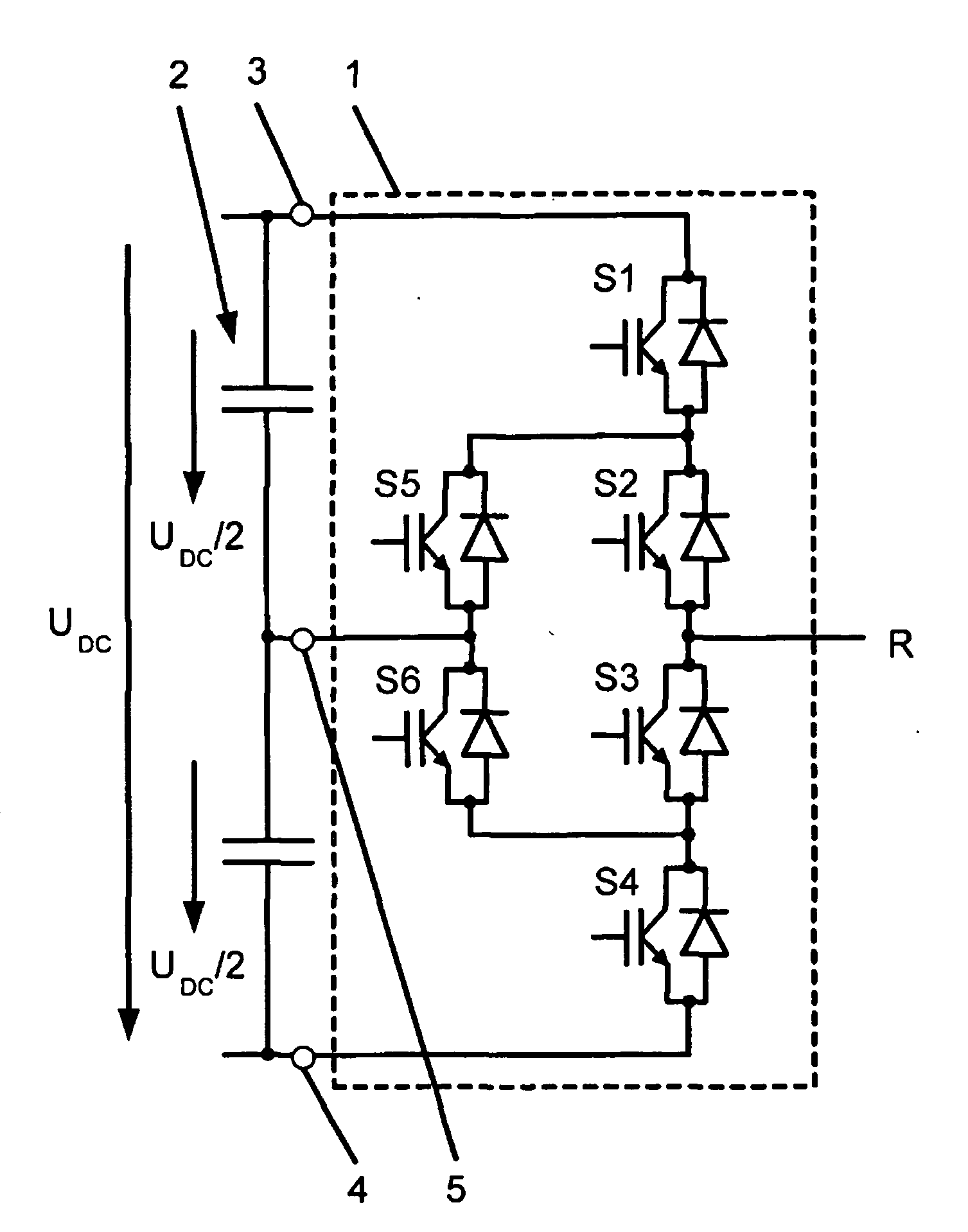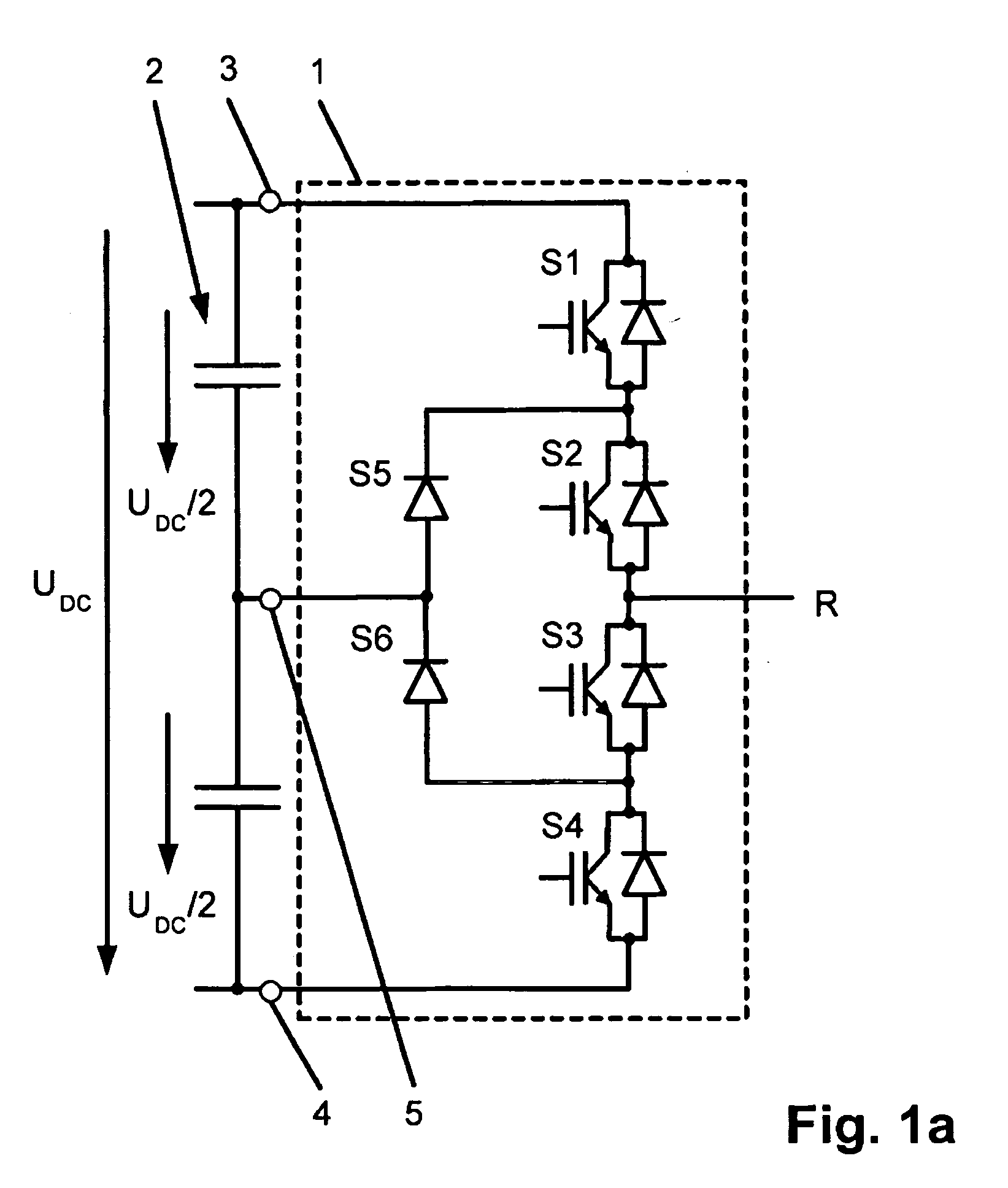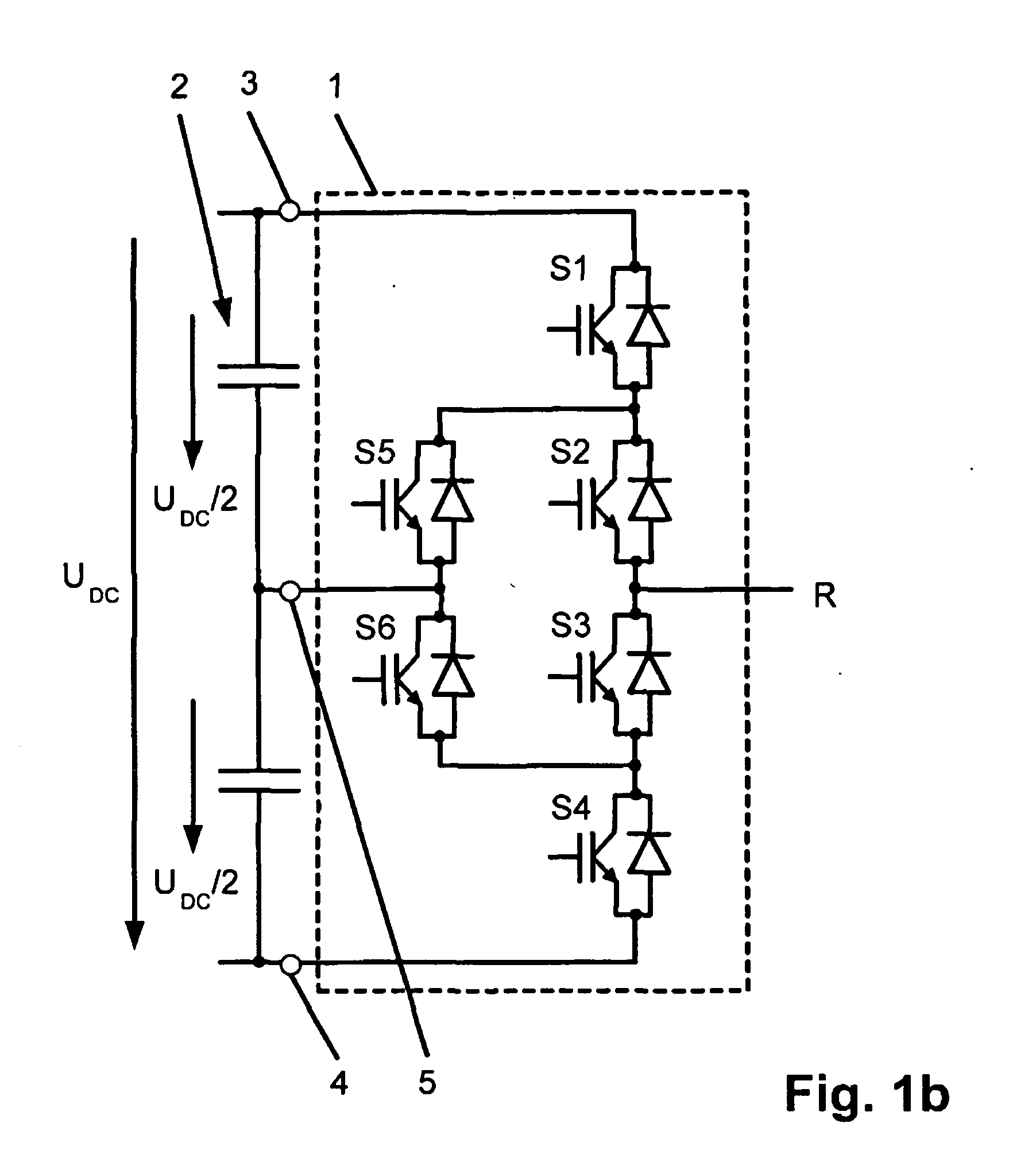Method for fault handling in a converter circuit for wiring of three voltage levels
a fault handling and voltage level technology, applied in the field of converter circuits, can solve the problems of destroying the igbt, putting a burden on the power semiconductor switch, and extreme power loss, and achieve the effect of less burden, avoiding damage to the power semiconductor switch, and reducing the risk of failur
- Summary
- Abstract
- Description
- Claims
- Application Information
AI Technical Summary
Benefits of technology
Problems solved by technology
Method used
Image
Examples
Embodiment Construction
[0021]FIG. 1a shows the exemplary converter subsystem 1 in a converter circuit for switching three voltage levels. The converter circuit has a converter subsystem 1 provided for each phase R, S, T, FIG. 1a showing just one converter subsystem 1 for the phase R. The converter circuit comprises a DC voltage circuit 2 formed by two series-connected capacitors, the DC voltage circuit 2 having a first principle connection 3 and a second principle connection 4 and a subconnection 5 formed by the two adjacent and interconnected capacitors. In addition, the converter subsystem 1 has a first, a second, a third and a fourth actuatable bi directional power semiconductor switch S1, S2, S3, S4 and a fifth and a sixth power semiconductor switch S5, S6. The respective actuable bidirectional power semiconductor switch S1, S2, S3, S4 is, in particular, formed by an insulated gate bipolar transistor (IGBT) and by a diode connected back-to-back with the bipolar transistor. However, it is also conceiva...
PUM
 Login to View More
Login to View More Abstract
Description
Claims
Application Information
 Login to View More
Login to View More - R&D
- Intellectual Property
- Life Sciences
- Materials
- Tech Scout
- Unparalleled Data Quality
- Higher Quality Content
- 60% Fewer Hallucinations
Browse by: Latest US Patents, China's latest patents, Technical Efficacy Thesaurus, Application Domain, Technology Topic, Popular Technical Reports.
© 2025 PatSnap. All rights reserved.Legal|Privacy policy|Modern Slavery Act Transparency Statement|Sitemap|About US| Contact US: help@patsnap.com



